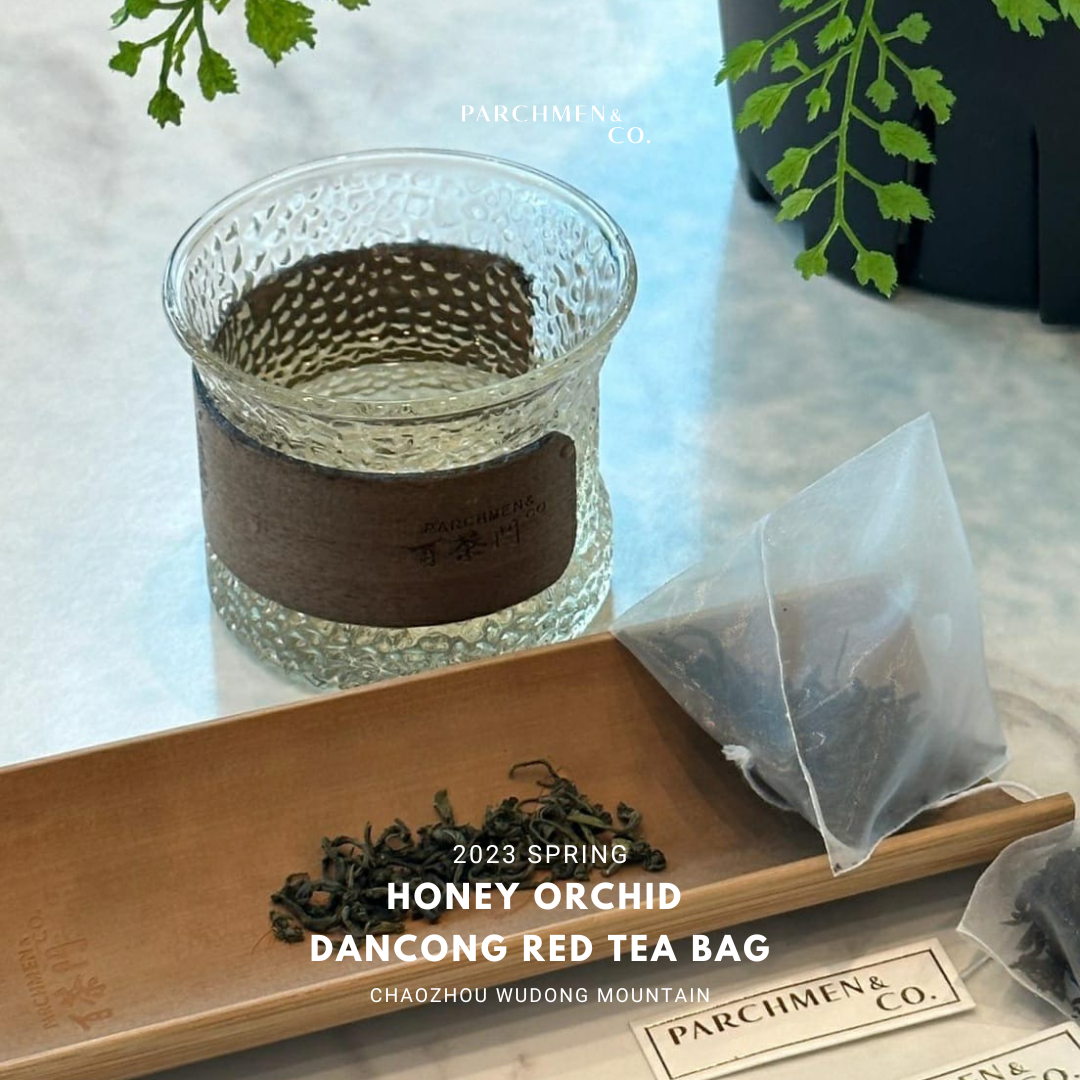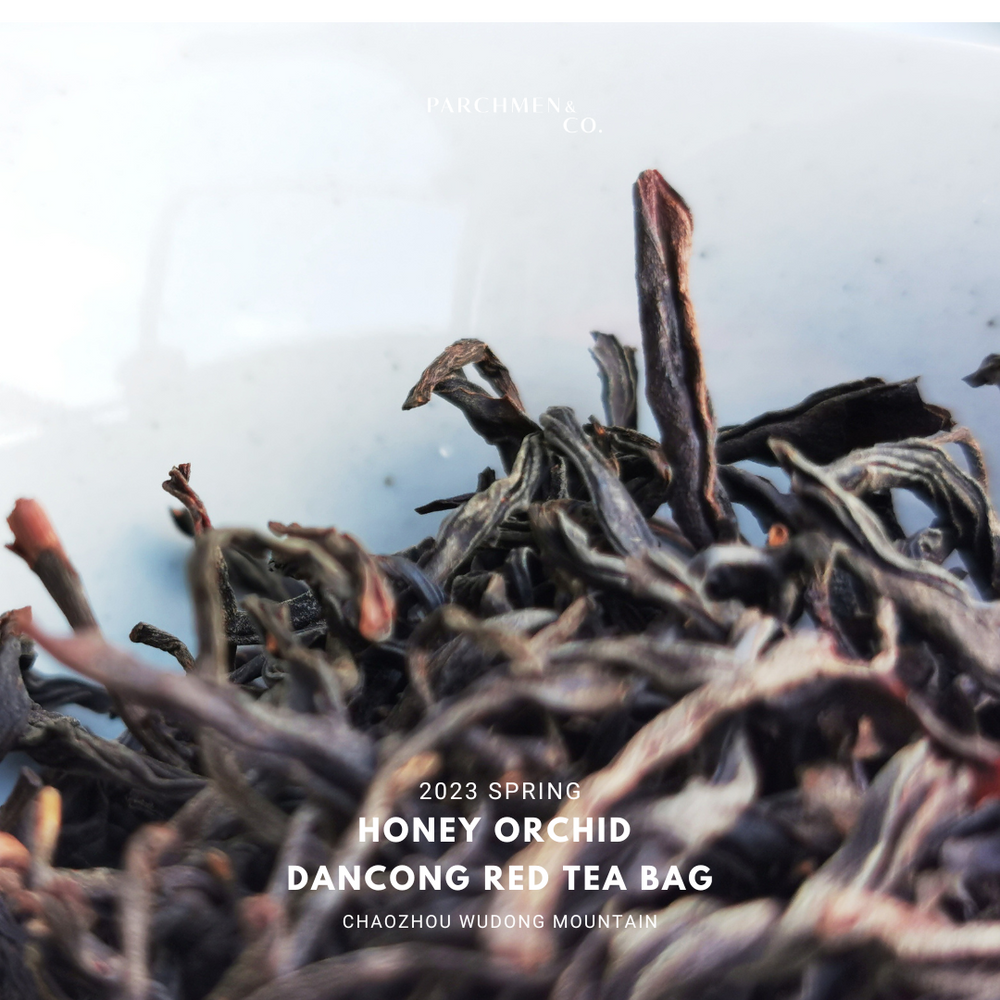2023 Spring Wudong Mt Honey Orchid Red Tea Bag & Coin and White Tea Biscuit
- In stock, ready to ship
- Backordered, shipping soon
Honey Orchid (蜜兰香) is the most famous of all Phoenix Mountain dancong (单丛) cultivars. Dancong teas are descendants of field selected single stock wild varieties with distinct characteristics. Honey Orchid dancong wulong tea is known for its honey and orchid notes, accompanied by lychee aroma. Since the last years of the Southern Song dynasty, with 900 years of history, the Chaozhou region east of Guangdong province neighbouring Fujian province is famous for dancong made into wulong tea. You can read more about this tea here. Other classes of teas made from this cultivar is indeed unconventional and uncommon. Here we have red and white teas made from this cultivar.
Guangdong province does produce red tea, but at a distance of 500 km northwestward at Yingde City (英德市), north of province capital city of Guangzhou. In 1959, Yingde Red Tea (英德红茶) was successfully cultivated from the selection of Yunnan assamica wild grown trees. Chaozhou is wedged in between the two major red tea producing regions of Yingde on its west and Fujian Wuyi Mountain on its east, and it benefits from red tea techniques of both regions. We have two versions of the Honey Orchid red tea - tea coins of 5-6g each and teabags of 3g each. Compressed shape of coin first started from a customer's order and slowly became a regular item in the tea estate. The auspicious coin shape is perhaps to facilitate higher acceptance in a region more inclined towards wulong tea instead of red tea. It is not very common for red tea coins in the market and we are excited to savour its flavour. The tea bag is at a discount to this spectrum of flavours of the tea coin, but offers a convenient no-fuss long steep and less the teaware.
They are packed in pyramid-shaped bags made of PET manufactured in America, with the same PET material used for manufacturing milk bottles there,
Guangdong province does not produce white tea. Our tea master has experimented and successfully developed the Honey Orchid white tea, cut into square biscuits of 5-6g each. To manage the vegetal character resulting from the white tea process, the tea biscuit undergoes additional roasting followed by resting to reduce roastiness, before pressing into squares.
Brew Flavour
For the red tea coin, we are using distilled water to brew it in a Parchmen glass gaiwan, using the full coin to 120 ml of 90°C water. For 120 ml water, add water to the Parchmen gaiwan until it touches the wooden sleeve. Normally, we will use lower temperature water to brew red tea, which should be treated much like a delicate green tea. However, its compressed shape warrants higher temperature to break open the shape. It took 1.5 min for the tea coin to start to unwind and we poured out the tea then. The brewed leaves is amazingly intense on sweet floral notes, and we picked up honey, maltose an a hint of chocolate, and curiously also of red wine, cask strength whisky and daiginjo sake. The tea colour is golden reddish and the aroma is strong on honey and stewed fruit notes in addition to the usual stonefruit notes of red tea. One can imagine it as the familiar wulong profile stretched further, with deeper oxidation producing deeper and sweeter notes in tandem with some slight fermentation. It is also a combined experience of both the cultivar and the processing techniques. We brewed for a total of 4 times using the same temperature and time to enjoy the characteristic notes of Honey Orchid wulong tea on a deeper and brighter base of a red tea process. The tea coin only fully opened up at the fourth brew.
For the red tea teabag, we are using a mug of 200ml size with 90°C water. After 1 min 15 sec, the brew turns amber red and the tea's characteristics start to show. For faster infusion, we 'dunked' the teabag five times. As we drink, we continue to add water to a more diluted but still enjoyable flavour.
For the white tea biscuit, we are brewing the entire tea biscuit in the Parchmen glass gaiwan, filling 90°C distilled water to to 150 ml, and letting it brew for 1 min. The tea is compact and needs fives brews before it can fully open up, with the flavours coming together from the third brew onwards. The brew colour is light cinnamon, maybe beige. The typical fruity - maybe berry - flavour of white tea is clear, but accompanied by an orchid aroma characteristic of the honey orchid cultivar. Although there is a hint of honey and brown sugar in the brewed leaves, we feel that the honey aroma has been subsumed under the enzymatic notes in the white tea processing, and not as identifiable as when it is made into an wulong tea. At the first sniff of the brewed leaves, there is a roasted sour note somewhat similar to the notes in a red tea, informing about the extra time it has spent during the processing and the extra heat it has picked up in the drying. The body is medium and it is sweet and umami, with notes of pepper slowly turning into orchid notes which becomes clearer as the tea cools and after more rebrews. It gives a hint of its wulong 'roots' with a lingering aroma at the nose, much more intense and longer as compared to other white teas, although not really comparable to a wulong tea. In a way, it is like a Zhangping Shuixian without the strong throat resonance.
The brewed leaves are of varied colours and sizes, indicating its harvest at a later stage of spring and the varying degrees of oxidation. The assorted colours remind us of the Darjeeling first flush teas. That would have clear aroma notes against a brighter but lighter cup, whereas the Honey Orchid white tea biscuit is more syrupy and sweeter, with a flavour profile that is deeper, and a longer afterflavour as compared to Darjeeling first flush. Its deeper notes are reflective of the age of the tea shrubs of around 200 years, the nitrogen-rich soils imparting more roundedness to the brew and the style of picking larger and older leaves. By reducing the temperature to 88°C and shortening the time to 1 min as you continue to brew, one can manage the astringency of the cultivar processed as a white tea, and would uncover the base Pheonix dancong characteristics.
All in all, the change in processing to red and white teas has brought more complexity to the Honey Orchid cultivar, and allow us to explore the relationships amongst the terroir, the processing and the cultivar.
Come onboard and travel with Parchmen & Co to savour our world in a cup!














